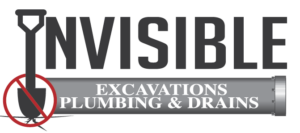Sewer Line Backup Cause #1: Tree Roots
One of the best parts about living in Lake County is the natural beauty – we’re surrounded by parks and yards full of trees and wildlife. Unfortunately, trees are somewhat of a Catch 22. While great to look at, or hide your home from your neighbors, their roots are your home plumbing system’s number one enemy.
More than 50% of all sewer line backups are due to tree root invasions. Roots like to grow in loose soil, which often surrounds sewer lines. Roots are also constantly seeking water, which your sewer line provides ample amounts of. Once they’ve broken into your sewer line, the roots continue to grow and entwine, which could possibly cause your pipes to crack further and ultimately collapse.
Older sewer lines made from clay pipe or cast iron are most susceptible to root invasion. Clay pipes, for example, have joints packed with mortar that cracks over time. The tree roots enter these cracks in their search for water.
Read more about sewer line safe landscaping and get some tricks on keeping your sewer line root free!
Sewer Line Backup Cause #2: Un”Flushable” Wipes & Other Hygiene Products
Here’s an interesting fact: Flushable wipes have cost several cities millions of dollars in sewer cleaning and repairs. While labeled as “flushable,” these nonwoven clothes are not biodegradable, and as a result are getting stuck in pipes and creating very expensive clogs.
If you’re unsure of whether something is “flushable,” it’s most likely not. So, just play it safe and throw it away instead. Water, human waste, and biodegradable toilet paper are the only things you should be flushing. Paper towels? Trash. Tissues? Trash. Cardboard from feminine products? Trash.
Sewer Line Backup Cause #3: Grease, Food, & Hair
Restaurant employees and staff in other commercial establishments are often provided special trainings on what can and cannot be poured down the drain. Most homeowners, on the other hand, never receive such training. That’s why many of us have been pouring bacon fat, leftover butter, and meat fat down our kitchen sinks without a second thought.
All of these fats, oils and greases do not easily wash down your pipes with the water – even if you run them through the garbage disposal first. Instead, they cling to the sides of the pipes and build up over time. They’re also a magnet for other, larger pieces of food such as egg shells.
Next time, let the bacon grease cool and solidify. Then, throw it away. Or find another disposable container, bottle or can that you can pour the grease into instead of pouring it down the drain.
Sewer Line Backup Cause #4: Heavy Rains
Several cities in Lake County – including Willoughby and Willowick – are too familiar with flooding as a result of heavy rains. This is largely due to aging infrastructure that was not designed with the same standards now in place for new installations.
When several Lake County cities were updating their sewer systems in 2010, Randy Rothlisberger, assistant sanitary engineer for the county, said, “Some sewers were built in 1910 and definitely are where most of our problems have been.”
“They’re nearly 100 years old,” he said. While Randy was largely referring to Fairport Harbor, north Madison Township and Mentor Headlands, there are many other Lake County cities built upon aging sewer systems. In addition to aging infrastructure, there are several other factors that must be considered for why heavy rains overload the cities’ storm and sewer water systems.
These include rate of rainfall, soil type, and number of hard surfaces, such as parking lots and sidewalks.
During periods of heavy rain, everyone is calling in a state of panic as their basements flood, both from storm and sanitary sewer backups throughout the city. Here’s the basic breakdown of the difference between the two:
- Storm Sewer: The sewer under each street that carries water directly to Lake Erie, or another body of water. Some homes in Lake County have a pipe that carries storm water from their foundation drain, gutters or downspouts to the sewer.
- Sanitary Sewer: The sewer under each street that carries wastewater from toilets and drains to Lake County’s wastewater plants.
What Causes the Basement Floor Drains to Back Up? Basement drain backups can be due to:
- a clog in your home’s main sewer line
- a clog in the municipal, or city, sewer line
- municipal storm and sanitary sewer systems backing up
More often than not, when water is coming up through your basement floor drains, the problem is water backing up from the municipal storm sewer system. However, storm water can also negatively impact the sanitary sewer system, causing sanitary basement backups.
What Should I Do About My Basement Floor Drain Backing Up?
Waste water backing up into your basement can be a serious health hazard. Not only does the sewage contain bacteria and viruses that can cause disease, but also the waste could contaminate your drinking water as well.
If you suspect the problem is due to a blockage in your home’s line, don’t run any more water down your drains, or flush any toilets until you have a professional inspect the pipes.
Getting Ahead of Sewer Line Backups
The best way to stay ahead of the problem is to have your lines routinely cleaned and inspected.
Disclosure: The information in this article was obtained from various sources not associated with Invisible Excavations. While we believe it is reliable and accurate, we do not warrant the accuracy or reliability of the information. The information is not intended to replace manuals, instructions or the advice of a qualified professional.

